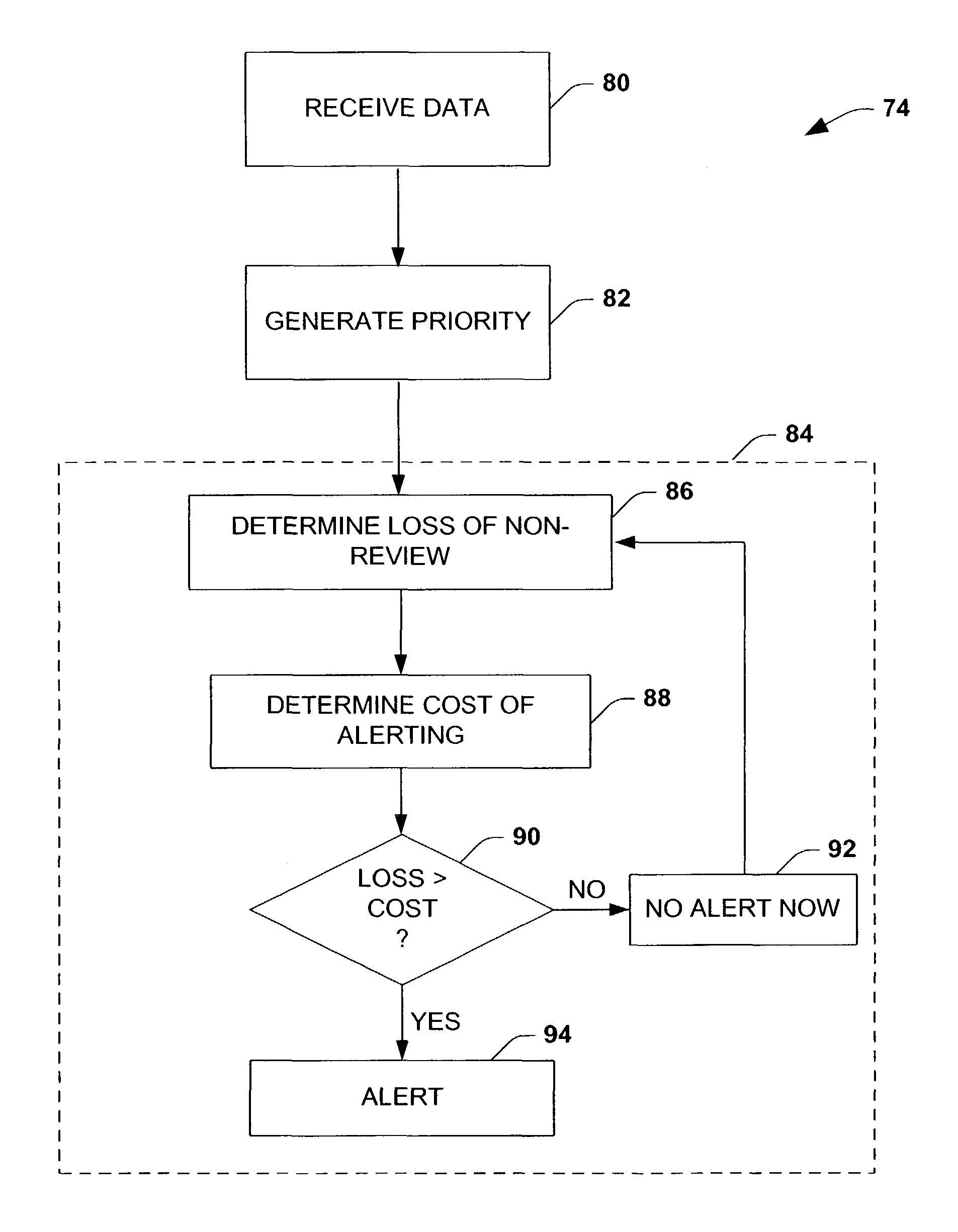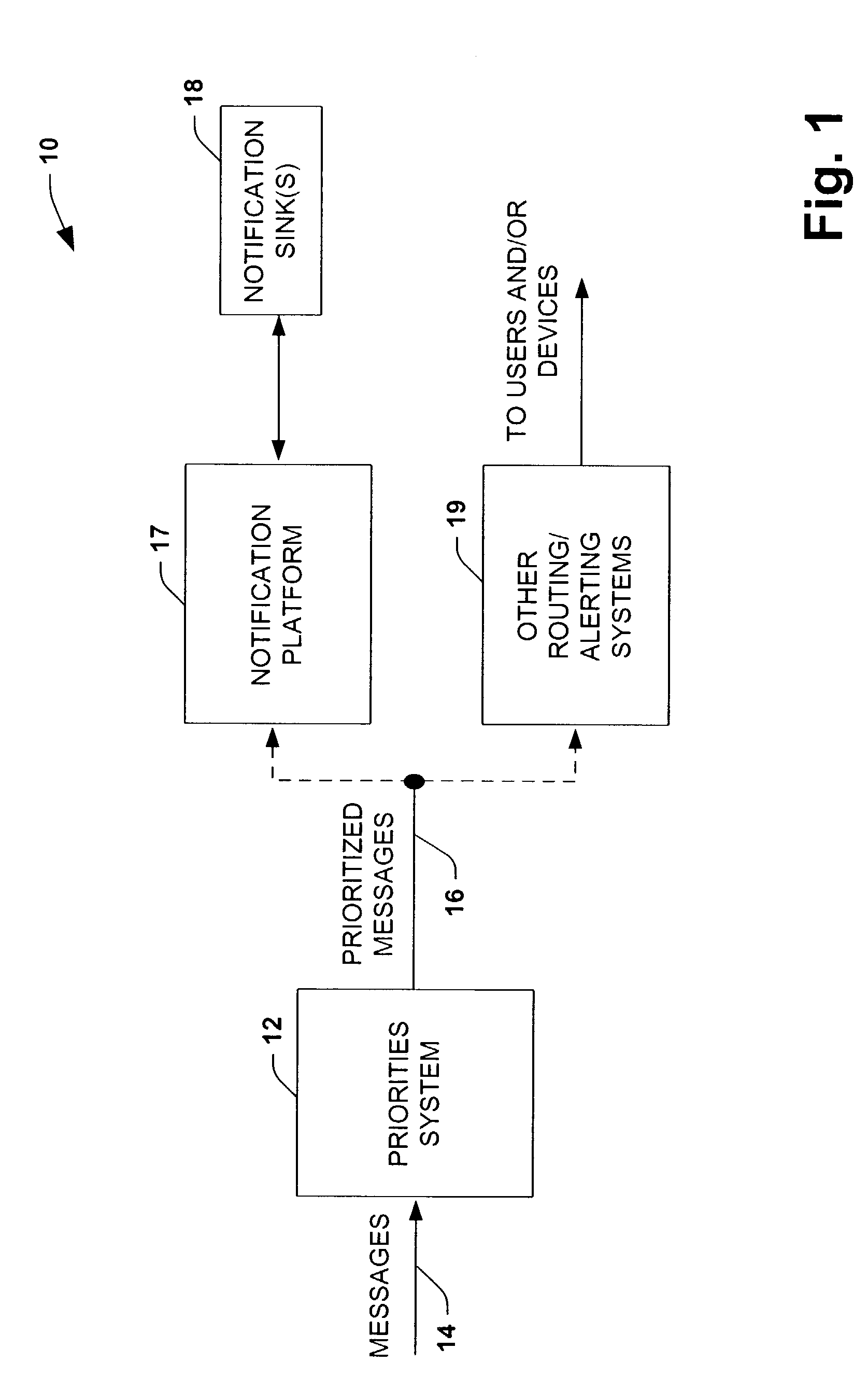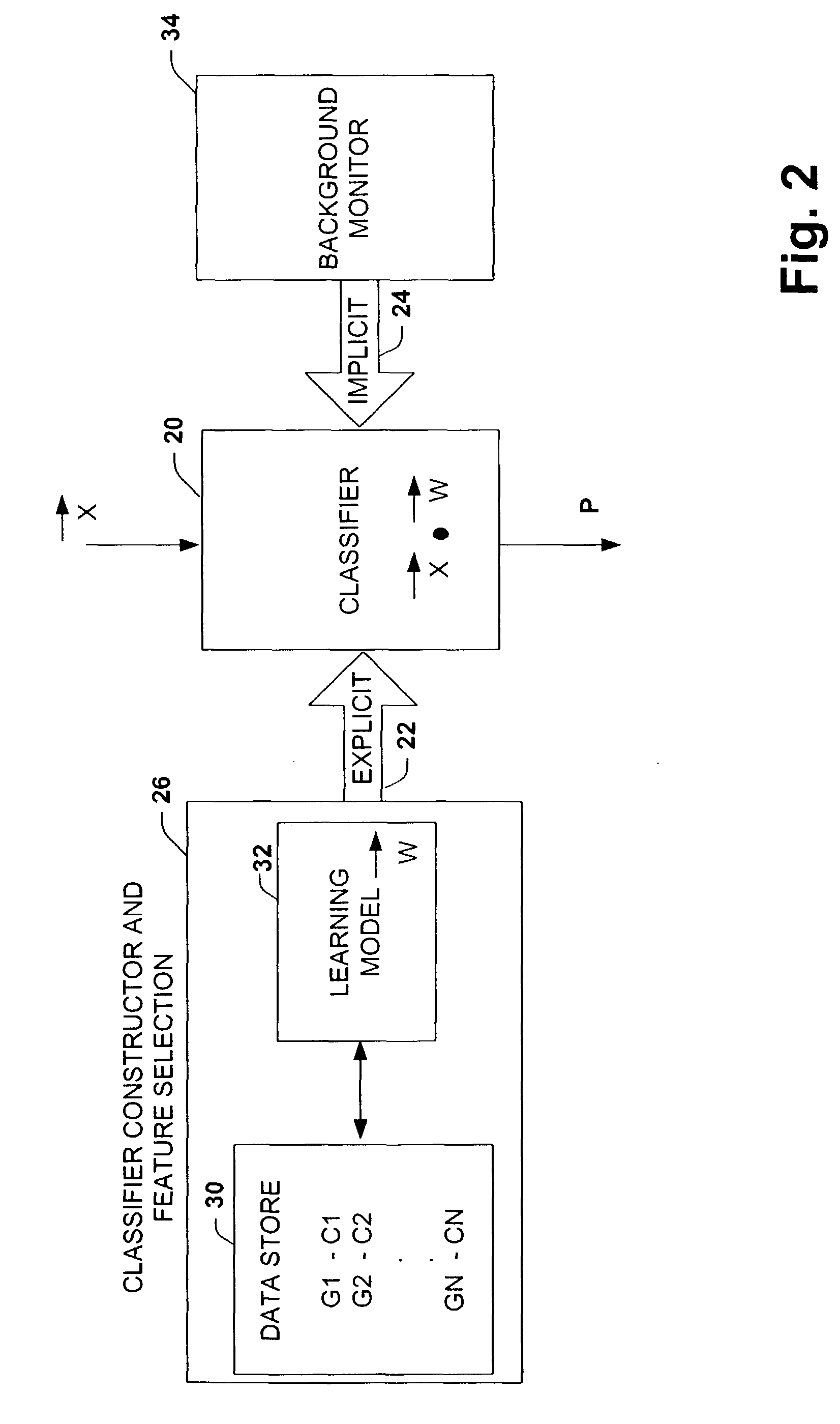Priorities generation and management
a technology of priority generation and management, applied in the field of computer systems, can solve the problems of difficult management of information, affecting the productivity of information management, and the inability to send, receive and process information, so as to reduce the amount of time and save tim
- Summary
- Abstract
- Description
- Claims
- Application Information
AI Technical Summary
Benefits of technology
Problems solved by technology
Method used
Image
Examples
Embodiment Construction
[0042]The present invention relates to a system and methodology to enable a plurality of information associated with electronic messages, for example, to be automatically prioritized by a priorities system for transmittal to a user or system. The priorities system can utilize classifiers that can be explicitly and / or implicitly trained to prioritize one or more received messages according to a learned importance to the user. As an example, messages can be classified as high, medium, low or other degrees of importance via a training set of examples or types of messages having similar degrees of importance. A background monitor can be provided to monitor a user's activities regarding message processing to further refine or tune the classifier according to the user's personal decisions relating to message importance. Other priorities classifications can involve determinations relating to a loss associated with a time for delayed review or processing of the message.
[0043]After messages ...
PUM
 Login to View More
Login to View More Abstract
Description
Claims
Application Information
 Login to View More
Login to View More - R&D
- Intellectual Property
- Life Sciences
- Materials
- Tech Scout
- Unparalleled Data Quality
- Higher Quality Content
- 60% Fewer Hallucinations
Browse by: Latest US Patents, China's latest patents, Technical Efficacy Thesaurus, Application Domain, Technology Topic, Popular Technical Reports.
© 2025 PatSnap. All rights reserved.Legal|Privacy policy|Modern Slavery Act Transparency Statement|Sitemap|About US| Contact US: help@patsnap.com



